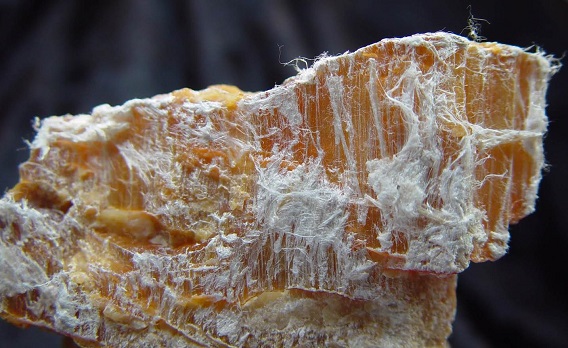Biden Administration Finalizes Chrysotile Asbestos Ban

Joining 50 other countries that have already banned asbestos, the United States is now banning chrysotile asbestos. The Biden administration has officially finalized the ban that follows decades of calls from survivors of asbestos-related diseases, medical professionals, veterans and first responders.
Chrysotile asbestos, also known as white asbestos, continues to be imported into the U.S., particularly for use in the chloralkali industry. Anticipating a ban, imports of asbestos rose dramatically in 2022 from 100 metric tons in all of 2021 to 114 metric tons in just the first 3 months of 2022, according to the U.S. International Trade Commission.
This new ban is the first of its kind in more than 30 years. The Environmental Protection Agency’s attempt to ban asbestos was overturned in 1989. The EPA tried again to ban asbestos in 2022, but the measure stalled. The 2022 proposal would have phased out chrysotile asbestos after 2 years.
Is This Asbestos Ban Enough? Advocates, Experts React
This new ban is a significant step, but some asbestos-related disease experts and advocates feel it’s not strong enough. Companies will be given a phase-out period of up to 12 years, allowing them to continue using it in manufacturing during that time. Though chrysotile is the main type of asbestos currently imported and used in the U.S., this ban doesn’t explicitly ban all types of asbestos.
Dr. Raja Flores, chairman of the department of thoracic surgery for Mount Sinai Medical Center, told The Mesothelioma Center at Asbestos.com: “It’s a step in the right direction. They need to ban all forms of asbestos. The government can save more lives than I can if they just do the right thing.”
Agreeing with Dr. Flores, Patient Advocate and Registered Nurse Karen Selby of The Mesothelioma Center, added: “This is a major milestone and a good day to hear that asbestos has finally been banned in the US. This is a huge step towards ending potentially harmful diseases asbestos exposure can cause.”
Former U.S. Army Capt. Aaron Munz, director of the Veterans Department at The Mesothelioma Center, noted: “Asbestos-related diseases have disproportionately impacted veterans. The men and women who served in the military make up a significant proportion of those diagnosed with mesothelioma. Military service members were exposed to the deadly mineral in equipment, structures and vehicles while performing maintenance, working near burn pits and moving in and near damaged buildings in combat zones. While this ban doesn’t reverse the damage caused, it’s a step in the right direction to ensure that fewer Americans are exposed to asbestos fibers in the future.”
While acknowledging it’s a step in the right direction, Linda Reinstein, president, and founder of Asbestos Disease Awareness Organization, expressed her concerns to The New York Times, saying: “While closing the door to chrysotile imports is a historic step, the EPA rule does not restrict importation and use of five other recognized asbestos fibers. We are also alarmed that the rule allows an unnecessarily long transition period and creates inconsistent compliance deadlines for certain asbestos users that will enable dangerous exposure to chrysotile asbestos to continue for years to come.”
This new ban comes just one month after the ADAO teamed with the International Association of Fire Fighters for an anti-asbestos campaign pushing for a nationwide ban of asbestos. The organizations created a 120 foot high and 84 foot wide billboard in New York City’s Times Square that stood for 2 weeks. The message was able to make more than a million impressions every day.
Dangers of Asbestos
Asbestos exposure is the primary cause of mesothelioma and has been linked to other forms of cancer and conditions such as asbestosis. Inhaled asbestos fibers can become trapped in the body, causing inflammation and scarring over decades, changing the DNA of cells and eventually presenting with serious symptoms.
Despite growing awareness of the health risks associated with asbestos, its use was widespread for many decades. Prized for its strength and heat resistance, the toxic mineral was used in roofing materials, textiles, cement, gaskets and automotive parts.
Occupational exposure is most common. However, mesothelioma survivors have also been exposed to asbestos in schools and from the use of consumer products such as home goods and toys.